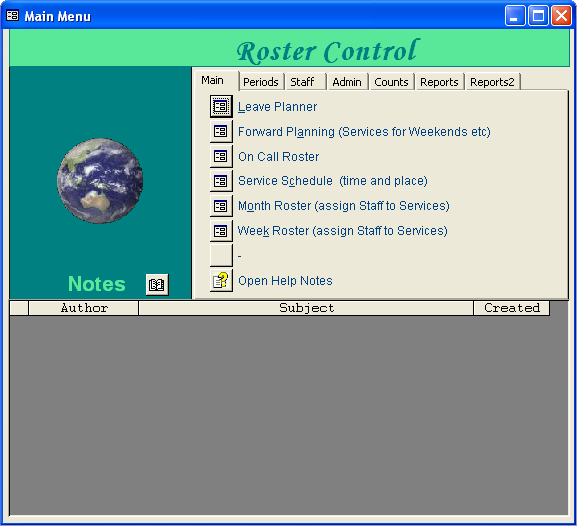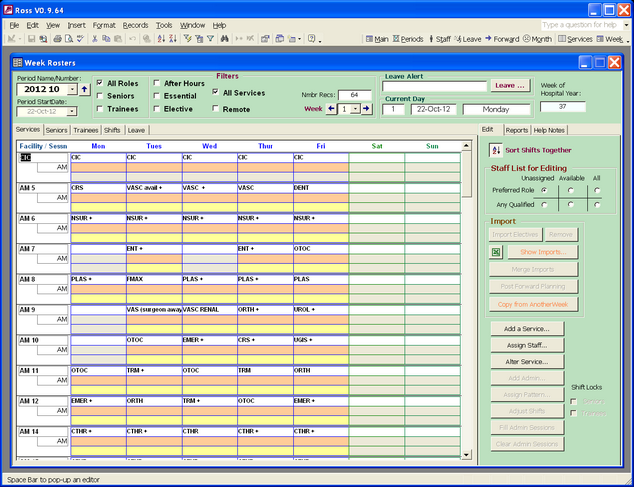Who are we
Codesmiths is a consulting service provider, owned and run by Phil McSharry
We have a broad range of design and development skills in-house and a network of associates who share our dedication to quality and provide extra breadth and depth of expertise.
Our close Associates include :


Where are we
Our office in Brisbane
Address:
Codesmiths
4/27 Harrys Road
TARINGA
QLD
AUSTRALIA
What do we do
We develop in-house and custom systems from simple to complex, from desktop to webserver for a range of organisations from accounting firms to hospital departments. We also provide consulting services for problem solving and improving effective use of IT.
While our traditional focus is on clarity and function, we also value appropriate aesthetic design and this website has been produced in-house. The image gallery at right is interesting in that is uses only css, no javascript.
Developing IT systems usually involves one or more of the following activities .
- analysing where useful information is available and how it is used,
- designing a database schema to bring this information together so it is entered once for unlimited usage,
- discussing and reflecting on the plans with all interested parties.
- developing an application to manage and maintain the data integrity,
- documenting and training in effective management and use of information
- generating meaningful reports with which performance can be tuned.
In this process we are usually able to consolidate duplicate sources of information and make some cost savings. We focus on utilising standards where possible
All our development work since 2000 has been in SQL, C++, Web languages (HTML, javascript, php, ASPX, C#) and MS Office systems.
Company History
CodeSmiths is a registered business name of P.J.McSharry & Associates Pty Ltd which was formed in 1981 to provide software development and related consulting services. Initial business was largely digital mapping services developed using Fortran on Prime computers. During the 1980's the company diversified into Apollo and Sun Unix workstations and the emerging field of Geographical Information Systems (GIS). During this period the language focus moved to C and then C++ as the Object Oriented paradigm began to prove its worth.
In the early 1990's the company started developing for the Microsoft Windows environment, especially in the field of database design. The company became a Microsoft Developer Network subscriber in 1992 and has produced a number of client/server systems in Office, including travel planning and rostering systems.
In the past decade we have been developing a rostering system for teaching hospitals, which began as a custom system for the Anaesthetists Association at at Cairns Base Hospital in Cairns, Queeensland.
How do we do it
Our business is based on increasing efficiency for our clients
Efficiency gains can be achieved through better software, better use of digital resources through reorganisation and retraining and by presenting operational information in ways which make decision making easier.
Long term consulting agreements
We generally develop relationships with our clients which typically extend for two to over twenty years. The agreements are based on an hourly rate with a monthly retainer. We provide services covering analysis, design, training, development and implementation. Our involvement with a client typically builds up over time, peaks and then tapers off. The need for our services decreases when the systems are running and the skills to manage and maintain them have been passed on to personnel in-house.
Organising Key Information
We generally know less about the core business than our clients do but we do not make decisions about the business. We know enough about the business to organise and access the key information. We know a lot about databases and data streams and particularly about geographic maps and 3d placement information and connecting databases to maps and timetables. We advise on facilities and strategies to convert data into useful information in forms which are easy to comprehend. Since 2004 we have been focused on databased rostering systems.
Integrating Information Sources
Major gains in efficiency can be achieved by connecting digital sources of information to avoid manual duplication with its high error rate. Often this is as simple as producing utilities to access other data sources such as Excel spreadsheets. In many cases assisted manual importing is better than completely automated data access. The latter is only reliable in well controlled environments with a high level of cata integrity.
Compliance with International Standards
Incompatibility between systems is becoming easier to overcome due to the steady proliferation of data standards. We are very strongly supportive of standards. For example the SQL standards together with The ODBC standard has made a huge difference to database access. The W3C organization (www.w3c.org) has made tremendous progress in the last 3 years towards stabilising the proliferation of language variants on the World Wide Web. This page complies with the W3C's HTML 5 standard. .
Who do we work with
Our clients are corporate and government organizations
We have long term relationships over several years with client organizations ranging in size from small to large. We work with both end user organisations and system integrators.
Independent of Suppliers
We have no agreements for commission on hardware or software so our advice remains independent. We will work for software developers and systems integrators (and commonly do) providing specialist development and maintenance services but we do not represent their products. We will procure hardware and software for our clients and have longstanding trade histories with a number of suppliers but we make our decisions in the best interests of our clients and our income stems from charges for time alone on agreed rates. We will provide fixed prices for fixed tasks and we commonly work to a monthly budget, achieving as many of our client's objectives as we can within the budget.
Retailers
We have been working with a number of the world's leading food retailers since 1996 on the design and development of sales area mapping and performance monitoring for improving performance. These systems have special requirements to maintain history for comparison of performance figures over several years and the planning and monitoring of change in the Sales Areas. We have had rare exposure to a range of methods and strategies used for management of these businesses in the U.K. and U.S.A. It is not our policy to publish the names of our clients but we will verify this statement in private communication.
Banks
We have worked on a retail banking design for some years in an extension to the systems for mapping and monitoring sales area fixtures and products in the retail sector. The main aim of these systems is to cut costs for deplaying monthly campaign material by optimizing the delivery of material to each branch to fit and fill the available fittings (mainly poster frames and brochure bins).
We have also worked on and developed call centre systems for managing, recording and analysing client contacts.
We manage our project planning and time recording to standards acceptible to those banks we have worked for.
Small Business
We have a number of relationships with small businesses, providing expertise for planning, training and support. (If the planning and training are good, there is little need for support).
A three year plan for the computing facilities needed to simplify management aand facilitate growth of small businesses is important for budgeting and purchasing sensibly to a reasonably complete picture. Cabling can often be fitted inexpensively in advance of requirements when other maintenace work is carried out. Knowing the medium term requirements of the business can facilitate opportunistic purchasing of facilities when opportunities arise. The planning documents assist in unexpected ways such as familiarising new employees with the systems and proposals as well as for briefing tradesmen and insurance agents.
Roster
Hospital Rostering
- Client Server system in MS Office and SQL Server
- Developed over 10 years in Australian Hospitals
- Flexible user-defined Staff, Service and Shift data, including shift patterns
- Multiple report generation in Excel
- Leave Tracking and availability patterns
- Separate Senior and Trainee forms and reports
- Separate Week and Period and Forward Planning forms and reports
- Session history counting / service distribution analysis
- In session drop-down lists of unfilled services and available staff


Gallery
The gallery at right utilises both javascript and css3 to create interesting random image transitions utilising graphics card processing (if the browser supports the funtionality). It was adapted in-house combining two published galleries (fluxslider and elastislide - detailed source information is in the js file).
Living and working in a place like Manly for 27 years was inspiring.
It is at its best in the early morning and we often started the day with a walk along a beach. The harbourside is good for fis-spotting but the sun rising over the Pacific Ocean is hard to beat.
Its a good idea to keep a camera in your pocket, even a part-time amateur like me can get the odd good shot in a setting like this.
Contact Us
|
Our office Address:Codesmiths Mail:CodesmithsP.O. Box 241 TOOWONG 4066, QLD, Australia Telephone: +61 428 99 1979 |
Enter contact information in the fields below.
Where are we
Our office in Brisbane
Address:
Codesmiths
4/27 Harrys Road
TARINGA
QLD
AUSTRALIA
dummy page
dummy page
Where are we
Our office in Brisbane
Address:
Codesmiths
PO Box 241
TOOWONG DC
QLD 4066
AUSTRALIA

































































